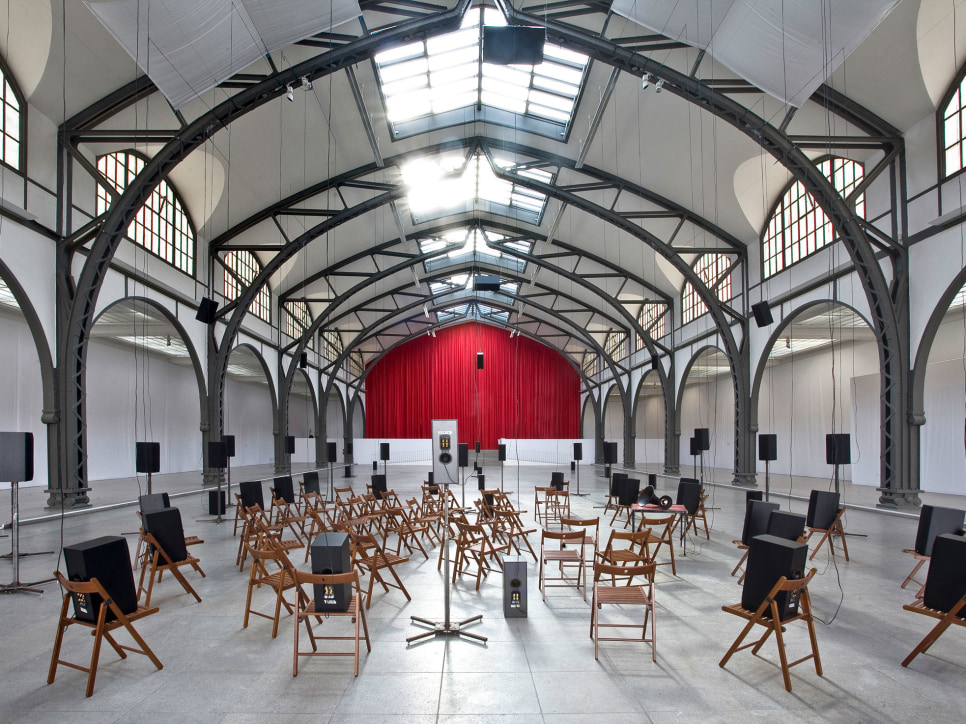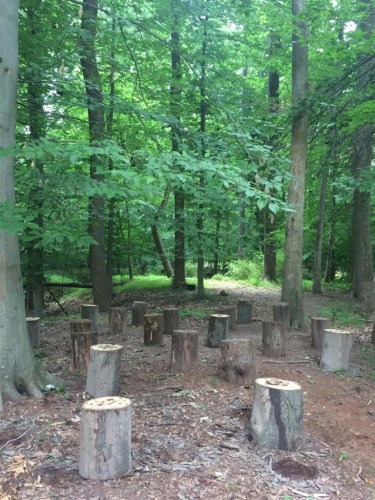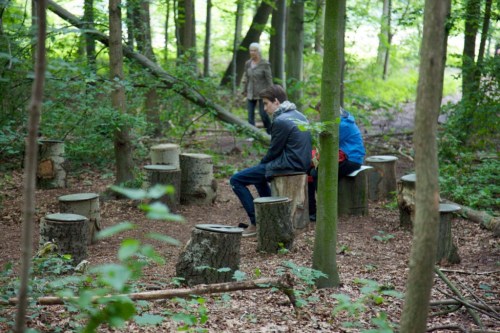

Janet Cardiff and George Bures Miller’s FOREST (for a thousand years…) (2012) during installation at Glenstone in May 2017.
©Janet Cardiff and George Bures Miller. Courtesy of the artists and Luhring Augustine, New York. Glenstone Museum, Potomac, Maryland. Photo: Glenstone Museum.
Think the life of a sound artist is all long, solitary nights spent wearing headphones and staring into a computer screen? Think again.
For Canadian artists Janet Cardiff and George Bures Miller, the process of creating a 28-minute sound installation is as collaborative and ambitious as making a feature film. To produce FOREST (for a thousand years…) (2012), which was acquired by the Glenstone Museum in Maryland this summer, the longtime artistic collaborators traveled across Europe, the US, and Canada collecting sounds. The husband-and-wife team recorded everything from Estonian choir music to their own child’s growls.
The final installation, originally commissioned for documenta 13 in Kassel, is making its North American debut at Glenstone, the private museum founded by collectors Mitchell and Emily Rales on a 200-acre former foxhunting estate.
The experience is uncanny. You enter a clearing populated by tree stumps, sit down, and listen to the sounds of rustling trees and bird calls. An airplane zooms overhead. Someone laughs. It is nearly impossible to determine which sounds are coming from a recording and which sounds are live. Then, machine guns begin to fire. An explosion detonates. It feels as if the forest is replaying the many horrors it has witnessed over the centuries.
For this edition of “Origin Story,” which explores the backstories of individual works of art, we spoke to Janet Cardiff about the painstaking process of creating the work, why explosions are so hard to record, and how the installation resonates differently in the US.
How did you develop the idea for FOREST (for a thousand years…)?
It came about from being in Kassel. We’d always wanted to make a piece that didn’t have any direct narrative to it, or a narrative voice. We’d tried doing that before, in The Murder of Crows, but in a big gallery space we found there wasn’t the resonance in sounds alone to hold the train of thought for 30 minutes. The forest in Kassel gave so much content and atmosphere to the work that the forest itself became a part of the narrative that ties the sounds together.
Once you have a site, what comes next? How do you start assembling the sound?
We have a place on an island off the west coast of Canada that has a forest. We said, “Oh, we’ll live there for three months to produce the piece.” Our daughter went to the local school and we just started recording. We got local people to do some of the sound effects for us—acting as if they were sword fighting, dragging things through the forest, singing, hitting trees, and so on, and we got up early to record the birds and rain. We also built a hut in the forest to edit right on site so we would know which sounds played back would have resonance in a forest setting.
It is at times very difficult to distinguish between real sounds in the forest and the recording. How do you achieve that?
In order to sound really authentic, sound needs to be recorded in a similar environment to the one in which it will be heard. Some of the subtlest sounds are actually the most effective. For example, if someone is breaking twigs as they walk in the recording, and you listen to it in a forest where there are twigs, it really feels like there is someone else there with you. It’s freaky. It’s hard to imagine how important the particular forest is to the experience.
Read full article at Artnet.com

